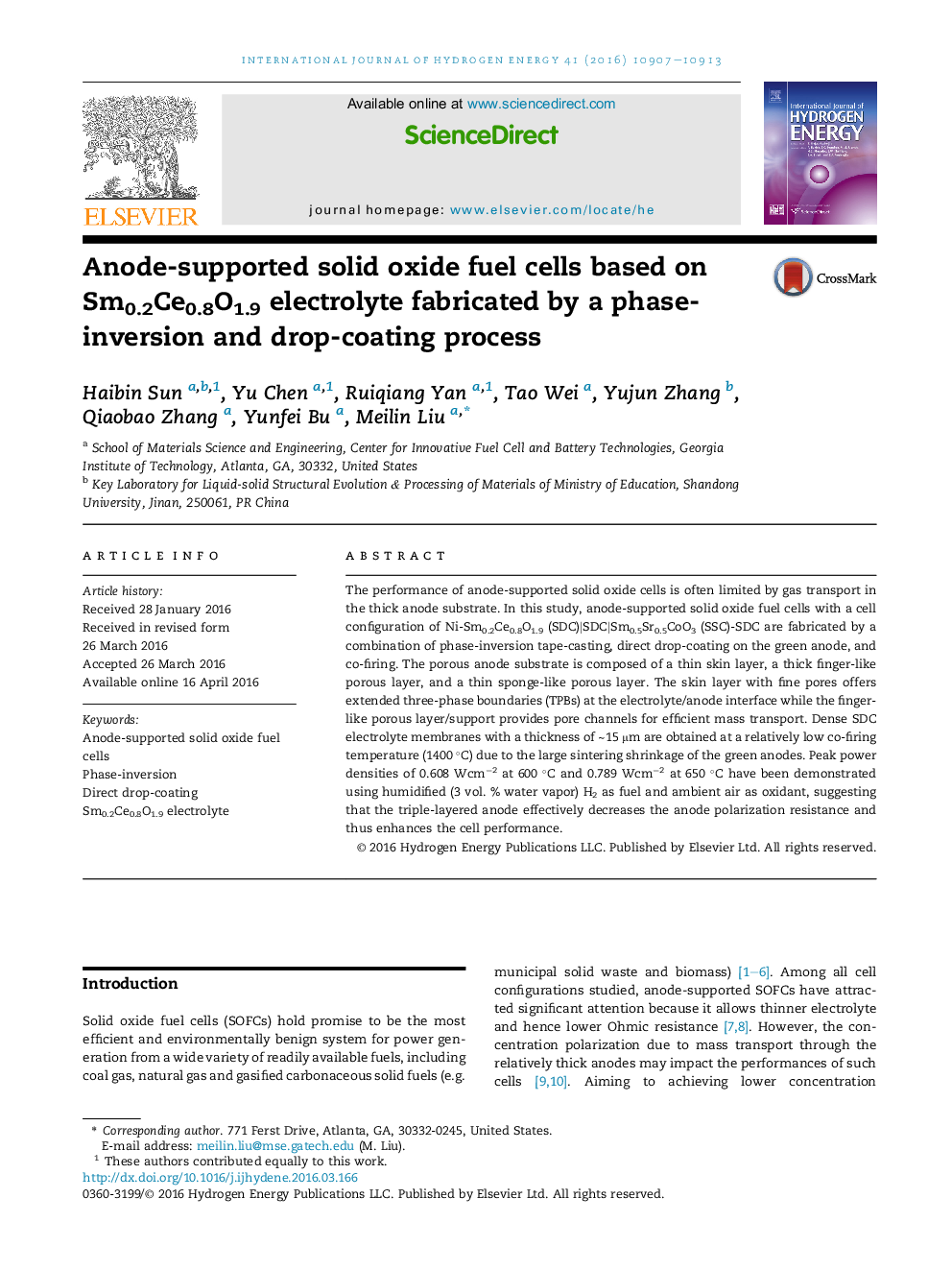| Article ID | Journal | Published Year | Pages | File Type |
|---|---|---|---|---|
| 1276815 | International Journal of Hydrogen Energy | 2016 | 7 Pages |
•Triple-layered Ni-SDC anodes are fabricated by phase-inversion tape-casting.•Dense SDC electrolyte membranes are obtained by direct drop-coating and co-firing.•A peak power density of 0.789 Wcm−2 at 650 °C is demonstrated for the single cell.
The performance of anode-supported solid oxide cells is often limited by gas transport in the thick anode substrate. In this study, anode-supported solid oxide fuel cells with a cell configuration of Ni-Sm0.2Ce0.8O1.9 (SDC)|SDC|Sm0.5Sr0.5CoO3 (SSC)-SDC are fabricated by a combination of phase-inversion tape-casting, direct drop-coating on the green anode, and co-firing. The porous anode substrate is composed of a thin skin layer, a thick finger-like porous layer, and a thin sponge-like porous layer. The skin layer with fine pores offers extended three-phase boundaries (TPBs) at the electrolyte/anode interface while the finger-like porous layer/support provides pore channels for efficient mass transport. Dense SDC electrolyte membranes with a thickness of ∼15 μm are obtained at a relatively low co-firing temperature (1400 °C) due to the large sintering shrinkage of the green anodes. Peak power densities of 0.608 Wcm−2 at 600 °C and 0.789 Wcm−2 at 650 °C have been demonstrated using humidified (3 vol. % water vapor) H2 as fuel and ambient air as oxidant, suggesting that the triple-layered anode effectively decreases the anode polarization resistance and thus enhances the cell performance.
